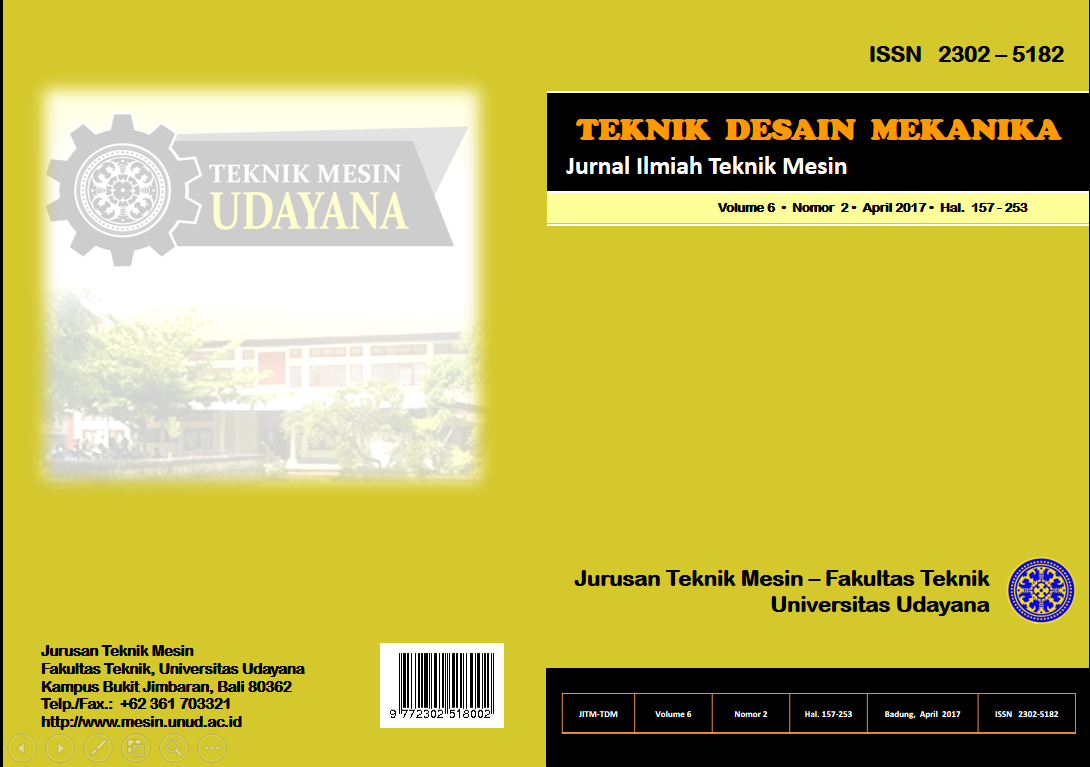Distribusi Temperatur Udara Dalam Proses Pengering Laundry Dengan Memvariasikan Konsumsi Bahan Bakar
Abstrak
Abstrak
Pengering pakaian menggunakan bahan bakar gas sebagai sumber panas yaitu liquefied petroleum gas (LPG), pemilihan
gas LPG sebagai sumber panas berdasarkan keunggulan gas LPG yang ramah lingkungan, panas yang dihasilkan baik dan
penggunaan lebih praktis, serta heat exchanger yang berfungsi sebagai honeycomb dengan memvariasikan konsumsi bahan
bakar, dengan menaikan bahan bakar maka energi yang diterima akan lebih besar sehingga distribusi temperatur lebih
meningkat. Pengujian yang dilakukan pada masing-masing variasi konsumsi laju aliran massa bahan bakar yang berbeda
yaitu 0,000125 kg/s, 0,000150 kg/s, 0,000167 kg/s, 0,000180 kg/s, dan 0,000206 kg/s. Dalam proses pengeringan pakaian,
yang dicatat dananalisa adalah distribusi temperatur udara masuk burner, udara masuk ruang pengering dan udara keluar
ruang pengering. Dari hasil penelitian di dapatkan bahwa pada pengaturan variasi laju aliran konsumsi bahan bakar
0,000206 kg/s menyatakan kelembaban absolutnya lebih tinggi dari pada variasi yang lainya.
Kata kunci :AlatPengering, AnalisaEnergi, KonsumsiBahanBakar.
Abstract
The dryer’s fuel is liquefied petroleum gas (LPG) as the heat source, the LPG was chosen as the heat sources based on the
excess of the LPG those friendly, the heat is good and more practice to be used, and the heat exchanger that used as
honeycomb, by rising up the fuel then the energy that accepted will be greater so the dry rate will faster to dry clothes. The
test on each variation of different fuel consumption that is 0,000125 kg/s, 0,000150 kg/s, 0,000167 kg/s, 0,000180 kg/s, dan
0,000206 kg/s. In the proceses of drying clothes the analysis is on the temperature distribution as the air coming in to the
burner, the air coming in to the chamber and the air outs from the chamber. There is a result from the test that is by the
variation of the fuel rate 0,000206kg/s states that the absolut humidity higher than the other variation.
Key words :Dryer, Energy Analysis, Fuel Consumption


